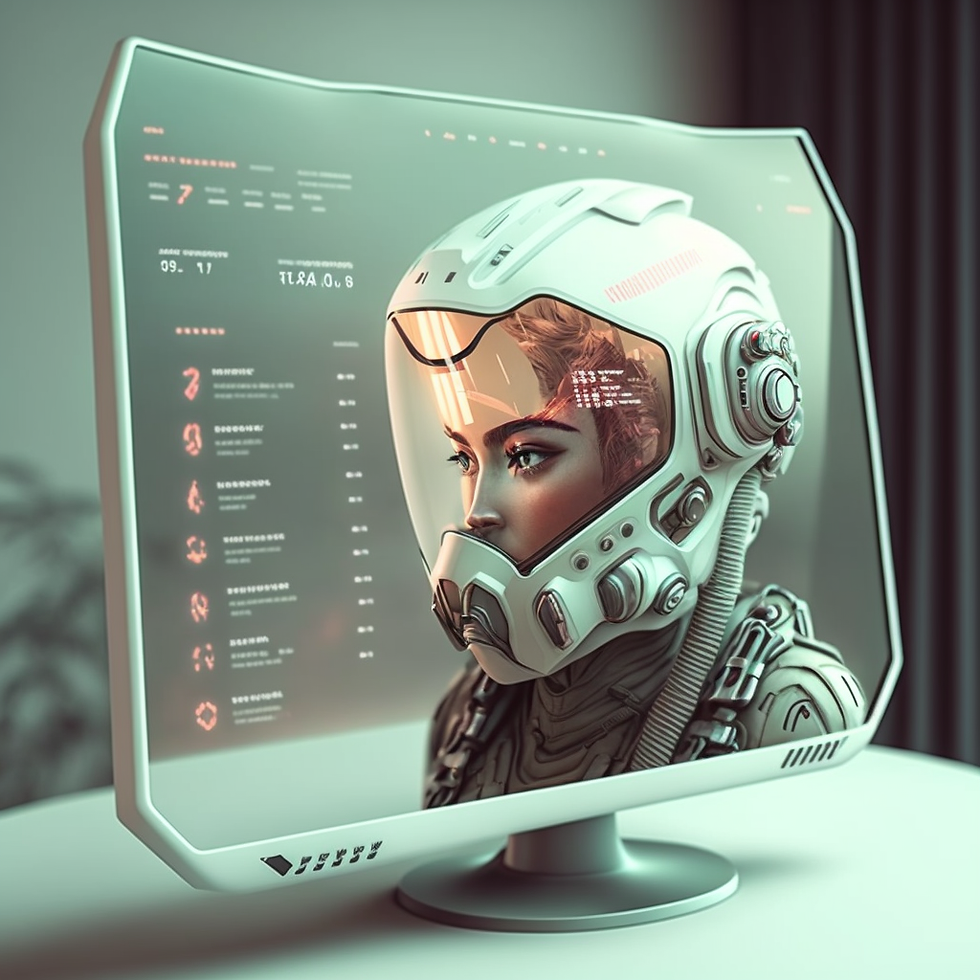How to Design an AI Chatbot with Great UX?
- Laura Kõrsmaa
- Apr 30, 2023
- 4 min read
We don't know how many AI chatbots are currently being developed, but the number is likely substantial. Our team has also been asked to help with designing AI chatbots recently, which inspired us to compile some guidelines for achieving an excellent user experience for any type of chatbot.

1. Who are the end-users?
User research guides you through each step in the design process. 🔍
2. Chatbot persona
We believe that creating a persona is even more critical for the chatbot itself than for its end-users. It will help the team understand the chatbot's identity and conversational style. Crafting a persona for the chatbot is essential in ensuring that it engages users and delivers a consistent experience.
Delve into the conversational style details: Long or short sentences? Family-friendly or professional vocabulary? Consider slang, speech patterns, adjectives reflecting mood, jokes, etc.
Think about creating multiple personas. The future of LLMs lies in personalization, so each user could also have their own chatbot personality. 🧛🧞👩🏽🔬
3. Provide a clear purpose
Receiving no answers or confusing ones is frustrating and immediately leads to poor UX.
Inform users about the chatbot's capabilities and limitations, so they know what to expect.
Train your chatbot with a large, but carefully chosen(!) dataset to improve its understanding of user inputs and ability to provide relevant responses. Continuously update the training data and implement feedback loops to ensure the chatbot's performance improves over time.
4. Include copywriters early on
The chatbot should deliver on-brand content with the intended personality (again, the persona is crucial), and copywriters are experts in achieving that. ✍️
Copywriters can create a set of predefined responses or conversation templates for common intents, scenarios, or user queries. These responses can serve as a foundation for the chatbot's interactions and help maintain a consistent tone and style.
They can also contribute by creating, curating, or editing datasets on which the AI is trained.
They can refine AI-generated responses to improve their clarity, accuracy, and coherence, while also adding empathy and a human touch.
5. Offer alternatives
This also comes back to the fact that getting no desired answer is immediately perceived as poor UX.
Providing alternatives is especially smart for e-commerce. The chatbot could suggest similar products, for instance.
Support chatbots should present similar or other frequently asked questions.
If the chatbot cannot resolve a user's issue or inquiry, provide a smooth escalation path to a human agent or other support channels, such as email or phone support.
6. Include different types of media
It doesn't have to be text only. Include links, images, GIFs, emojis, buttons. 👾 The choice of media should capture the purpose and intended chatbot persona.
7. Voice interface
It's a good idea to allow users to interact with the chatbot through various input methods, such as text, voice, or pre-defined quick replies. This improves accessibility. If your AI chatbot has a voice interface, then the persona comes in especially handy, inspiring the nuances in the spoken voice. 🗣
8. Avoid bias and design inclusively
Bias, harmful stereotypes and misinformation is a huge problem with today's LLMs. Ethics should not be solely the UX designer's responsibility (as it often is with other types of digital products) but instead should be the entire team's top priority.
Ensure the training data used to build the chatbot's AI model is diverse and representative of the target user population. Adjust the training data or model, if necessary. Plenty of ongoing research and ethics guidelines are available, so it's essential to constantly search for best practices.
Be transparent about the chatbot's capabilities, limitations, and data usage. Clearly communicate to users what the chatbot can and cannot do, and how their data will be used and protected.
Consider whether your end-users might write in a different language.
Test on and include diverse groups of people from outside your organisation to the development process.
9. Test and iterate
As with any other digital products, continuously test your chatbot with real users to identify areas for improvement. Gather user feedback and analyze chat logs to refine the chatbot's performance and UX. 🔄
10. Design a clear and visually appealing UI
The visual aspect of the interface is the simpler part. However, there are some specifics to bear in mind when it comes to AI chatbots. 🪄
Accessibility over eye-catchers!
If your chatbot lives in a little chat box in the bottom corner, then don't forget to match it with the rest of the website.
Consider its responsiveness - even if it's already a small box.
Present the chatbot option in different locations on your website: think through your user flows and whenever it might be needed.
The chatbot will be perceived as more trustworthy if it matches your brand and rest of your digital ecosystem.
Think about how the words appear on the screen: instantly, displaying the three loading dots 💬, visualising real-time typing, or animating brand elements.
Differentiate the chatbots answers from the users' ones.
What does the chatbot avatar look like? 🤖👻🕵️♀️
Contact us
If you need help designing an AI chatbot, contact us at hello@experiencedesign.ee. We consult your team on the different aspects of building a great conversational UI, host a chatbot persona workshop, test and audit your chatbot's UX, create a beautiful visual design, or assist in any other way we can.
Read more about our other design services here → https://www.experiencedesign.ee/services



Comments